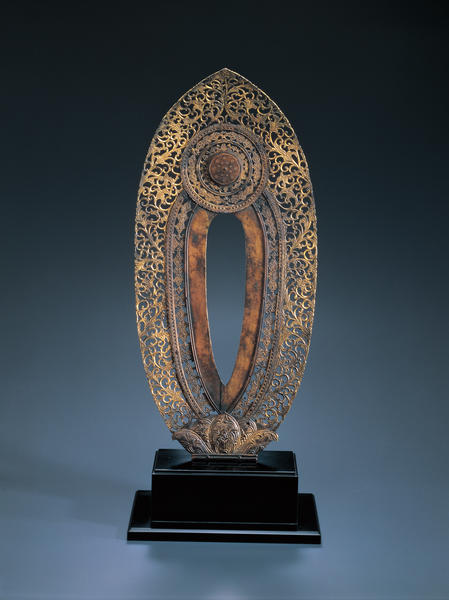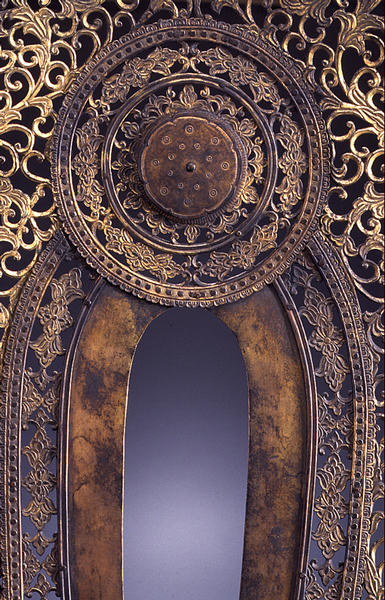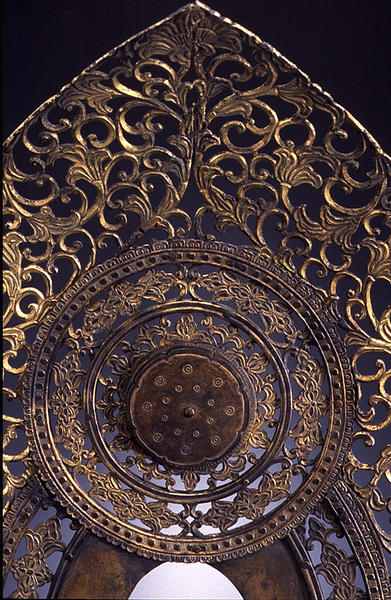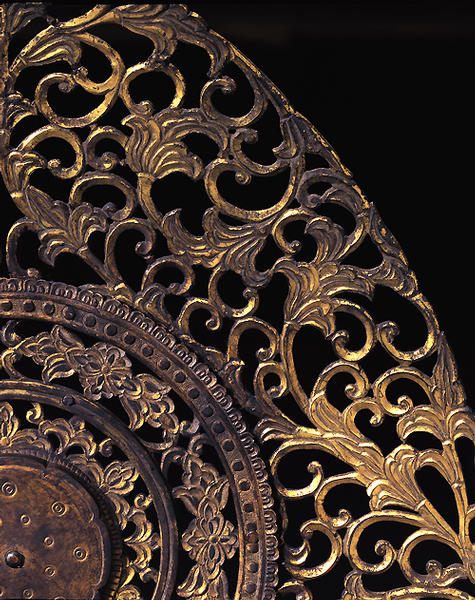Nimbus for a Buddhist Sculpture
- Late Kamakura period
- 14c
- Gilt bronze, open work
- H-57.8 W-25.8
Catalogue Entry
Late Kamakura period, 14th century
Gilt bronze, open work
Height, 57.8cm; width, 25.8cm
This nimbus would have adorned the back of a Buddhist sculpture. Unlike normal mortals, Buddhas and Bosatsu (Bodhisattvas) have 32 specific aspects which indicate their sanctity, and the Emitting Light Aspect is one of these aspects. Thus, halos of light, or nimbuses, were displayed behind Buddhist images.
This nimbus is made up of the round head nimbus which would have been situated behind the figure's head, the body nimbus which would extend from the shoulders to the feet, both surrounded by a broad encompassing outer nimbus that descends to the final form of the base of the nimbus. The entire form resembles that of a boat, and hence this form of nimbus is often called a "boat-shaped nimbus."
This nimbus was created out of an openwork panel of bronze, and the overall surface has been gilded. With the exception of the lotus blossom which forms the center of the head nimbus, the inner band of the body nimbus, the base of the nimbus, and the band of connected jewels which delineates each section, the entire construct is made up of openwork karakusa vining motifs and hosoge motifs, each expressed in utter clarity. The work provides a splendid understanding of the superior openwork skills of the artist who expended considerable effort and care on the finest details of the nimbus.
The expression of the openwork karakusa vining motif which forms the surrounding edge of the nimbus is similar to that found on the openwork ritual flower basket of Jinshoji, Shiga prefecture, and the openwork sutra container of Mantokuji, Aichi prefecture, but the openwork expression on the present nimbus is somewhat harder than these examples. This nimbus probably dates from the latter half of the Kamakura period. SS



